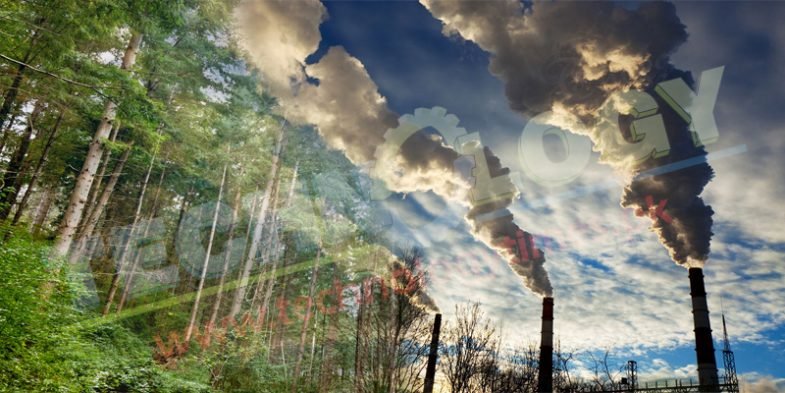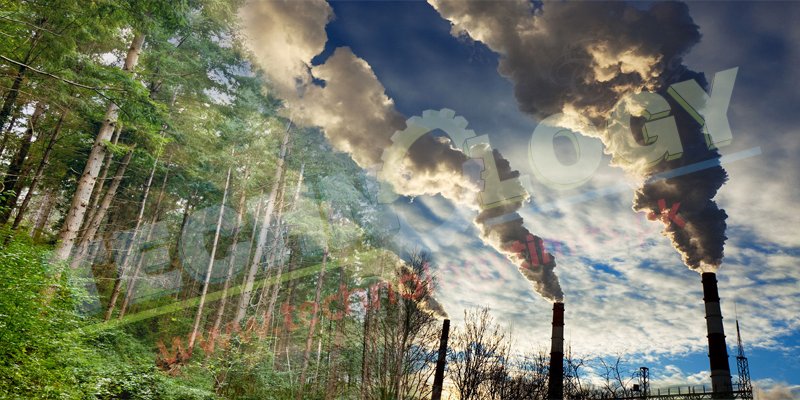 nd most significant cause of global warming and emit 15% of greenhouse gases globally. Forest detain 80% of terrestrial carbon and 40% below ground. To combat the drastic impacts of climate change through controlling emissions from forest deforestation and forest degradation is an important mitigation strategy mainly due to its multiple benefits including sustainability and cost effectiveness. Pakistan has been ranked 7th most affected nation in the World on the of negative impacts of climate change in both long term and respective year index from 1996-2015 by GCRI (Global Climate Risk Index). The country has arid, semi-arid and dry climate. Forestry is an agriculture sub-sector and participates in the form of timber and firewood. The country forest reserve provide food to animals and humans including with lumber, latex, paper, fuelwood, resin and medicine, playing crucial role in ecotourism and wild life conservation especially along northern areas of the country, while forests are being used to combat from desertification and soil erosion along Thal desert, flooding is being controlled through growing Riparian forest along Indus river and recently government and public institution has been taking crucial steps to manage forests and growth rate has dramatically increased from last year -10.43% to 8.84% by 2015.
nd most significant cause of global warming and emit 15% of greenhouse gases globally. Forest detain 80% of terrestrial carbon and 40% below ground. To combat the drastic impacts of climate change through controlling emissions from forest deforestation and forest degradation is an important mitigation strategy mainly due to its multiple benefits including sustainability and cost effectiveness. Pakistan has been ranked 7th most affected nation in the World on the of negative impacts of climate change in both long term and respective year index from 1996-2015 by GCRI (Global Climate Risk Index). The country has arid, semi-arid and dry climate. Forestry is an agriculture sub-sector and participates in the form of timber and firewood. The country forest reserve provide food to animals and humans including with lumber, latex, paper, fuelwood, resin and medicine, playing crucial role in ecotourism and wild life conservation especially along northern areas of the country, while forests are being used to combat from desertification and soil erosion along Thal desert, flooding is being controlled through growing Riparian forest along Indus river and recently government and public institution has been taking crucial steps to manage forests and growth rate has dramatically increased from last year -10.43% to 8.84% by 2015.
Source: Office record of chief conservator of forests, KPK, Punjab, Azad Jammu and Kashmir. Baluchistan, and Sindh (2012-2013), Gilgit Baltistan 2004.
Forests are mainly affecting by several anthropogenic factors such as demographic, institutional, economic, political and technological changes, demand and globalization, while floods, drought, global warming and land sliding are some other factors, which are affecting forests across the country.
Climate change has directly linked with forests resources as the forests affect climate through chemical, physical and biological process by changing hydrology, atmospheric composition and alter global energy balance of the Earth. Such a complex relation of forests and atmosphere play an important role to fix carbon dioxide (CO2). Mitigations of drastic impacts of climate change can be further boosted up through reforestation and afforestation of temperate, tropical and boreal forest. A case study of regional climate which is greatly influenced by dense forests can be practically observed in Amazon forests. Climate change has potential to affect respiration and photosynthesis especially in forests. Changing in rates of biophysical process, physiological tolerance and damaging forests ecosystem are some aspects of climate change. Lack of water could convert forests into grass land and savannahs even into deserts. Safe and healthy environment requires forests and their degradation has severe socio economic and human impacts. Forests require special attention because of their multiple benefits. They are major pool of earth biodiversity and consist about 50% of Earth biomass carbon. While cutting of forests are major source of annual GHG emissions into air but proper management, conservation are pre-requisite strategies to maintain and enhance forests cover in the country. Forest have natural tendency to adapt to climate change, rehabilitate ecosystem and biodiversity. Some forests base species of birds and insects which perform pollination in various plant species and play their role in seed dispersal, their loss has serious negative result for ecosystem. Pakistan forest cover are suffering serious decline to check this decline Food and Agriculture Organization of United Nation and government of Pakistan by 2009 has jointly draw trend analysis to estimate possible forest behavior in future
Table 1: Past and Future estimation of Forest Resources of Pakistan
Types Previous Area (Million Hectare) Future Projection (Million Hectare)
Coniferous Forest 1.512 in 1992 0.88 by 2020
Scrub Forest 1.323 in 1992 1.719 by 2020
Riverine Forest 95,000 Ha in 2001 60000 Ha by 2020 (Sindh)
Mangrove Forest 158,000 Ha in 2001 52000 Ha by 2020 (Sindh, Baluchistan)
Irrigated Plantations 174,000 Ha in 2001 254,000 Ha by 2020 (Punjab, Sindh)
Rangeland 23.54 in 2001 12.54 by 2020
Source: Government of Pakistan and Food and Agriculture Organization of United Nation 2009.
Carbon Fixation and Forest
Greenhouse gases (GHG) are major reason behind climate change. Carbon dioxide is a major GHG gas. Its level has been increasing up to 400 ppm in atmosphere. Forests serve our earth by playing crucial role in carbon sequestration. Carbon dioxide is sequestrating in live woody tissues and further breakdown into organic matter. Forests are being absorbing billions of tons of carbon dioxide every year and provide economic subsidy of hundreds of billions of dollars and protecting living things from negative impacts of climate change, as the CO2 level is increasing in the atmosphere so, plants respond to high level of CO2 by increasing rate of photosynthesis and this increment of CO2 act as negative feedback mechanism to high level of CO2. REDD+ is count as a key opportunity to tackle the carbon emissions from deforestation and forest degradation in the country
Conservation and Protection of Forest
Forests are being protected through declare a protected area for wild life and forests, National conservation strategies provide a base in Pakistan and the country has been developing man made forests including Chichawatni and Kamalia plantation, Changa Manga and Khipro Forest, While the country has made significant progress to conserve natural forest such as Birir Valley, Jhangar. Sulaiman and Ziarat Juniper forest. Forests are essential components of environment and provide several free of cost services to mankind by keeping our environment healthy and safe, performing hydrological regulation, source of fresh air in the form of oxygen, fix carbon dioxide, enhance soil fertility, add organic matter, proliferate useful algae, fungi, animals and birds, trap dust particles, paly their role in a phyto-remediation, act as a major source of recreational and ecotourism across the World
Effective Mechanisms and Strategies to Improve Forest
To improve forests cover and promote afforestation, reforestation and reduction of deforestation in the country, certain strategies and mechanism need to be adopted on local and nation level including effective and long term community participation to maintain and grow forests, capacity building in REDD+ strategies, enhancement of protected areas on local and national level, sustainable management in agro-forestry, help government as well as private organizations to develop forests policy on provincial level and implement it on district level, invest on research and development. While federal and local government need to control illicit grazing, introduction of saline and water-logged resistance species of plant, encouraging agro-forestry in villages by promoting cost free sapling to local farmers and concern authorizes, increase awareness among farmers and local inhabitant, take initiative to share latest advancement in forestry through help of informal educations.
Acknowledgment
National REDD+ Office (NRO) Ministry of Climate Change, Islamabad is providing finicail support for this Work.
This article is collectively authored by Muhammad Waqar Azeem, Maria Batool, Ashfaq Ahmad and Muhmmad Sana ullah.
